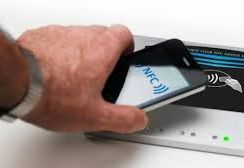Published on the 11/09/2014 | Written by Beverley Head

The launch of Apple Pay, which will turn the new iPhone6 and Apple Watch into tap-and-go digital wallets, can’t take place in A/NZ before 2015 because part of the security framework is missing…
At the heart of the mobile payments platform announced in the US by Apple this week is a service called tokenization which is provided by the main payment card issuers such as Visa and MasterCard. Instead of card details being stored on the smartphone, to protect the consumer a digital “token” linked to that card is issued and stored on the secure element in the iPhone.
When a purchase is made, it is that token, coupled with a fingerprint through Touch ID, that authenticates the payment. If the phone is compromised the token can be cancelled and a new one issued without having to replace the payments card itself.
Although the tokenization service will be available in the US shortly, allowing Apple to roll out Apple Pay for US consumers from October, both MasterCard and Visa this week acknowledged that this capability won’t be available locally until 2015.
Apple Pay joins a slew of other mobile payment services and digital wallets already available in Australia. Although Google last month announced that it had no plans to bring its digital wallet to Australia, there is a range of options already on offer from organisations including the banks (many of them NFC enabled to allow tap and go payment), supermarket chains and PayPal.
According to Alex Boorman, RFi Group research director, even when Apple Pay is released in Australia they will likely prove “a bit of a slow burn as it will be dependent on the speed at which people upgrade their handsets and merchants accept this”. Analyst Telsyte yesterday forecast that “price shock” might also impact Australian demand as only one iPhone6 model will be available in Australia for less than $A999.
The Australian smartphone market however still has headroom. According to RFi by June 67 percent of Australians owned smartphones – 36 percent being Android, and 35 percent Apple, with a range of other brands making up the remainder of the market.
Whatever the uptake of the new iPhones the arrival of Apple Pay will further legitimise both digital wallets and tap-and-go payments.
Australia already has the highest ownership of contactless payment cards in the world, with the two major card schemes now handling $100 million worth of contactless transactions each month. According to Lance Blockey, RFi Consulting managing director, that means that “Australia is doing in one month what the whole of the UK does in one year with three times the population”.
While NFC enabled smartphones and wearables are not expected to replace plastic cards any time soon, they are likely to further challenge the cash economy.



























